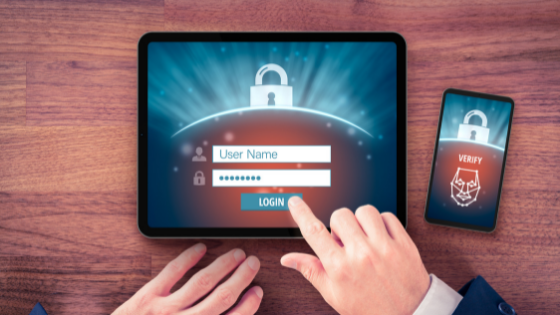
Cybersecurity attacks seem to become more common every day. The attacks themselves are growing more sophisticated, targeted and are taking a greater financial toll on the victims. Ransomware attacks in which hackers seize a victim’s data until a ransom is paid has impacted cities, hospitals and small and large businesses alike.
Even critical infrastructure such as gas pipelines and shipping industry data centers have been targeted. While the attacks have grown more complex, preventing them can be simple. Surprisingly some of the major attacks like the Florida drinking water scare and the Colonial Pipeline ransomware attack may have been prevented if procedures such as two-step authentication had been implemented.
Two factor authentication, or 2FA, is an extra layer of security that can be used to allow access to an application, website or network. The first factor is your user password while the second factor can be a PIN, some type of biometrics ID or a confirmation code. These can be thought of as something you know, something you are and something you have.
The password or PIN would be an example of something you know. Voice recognition, face scan or fingerprints are something you are; while a smartphone or key fob can be considered something you have.
Why use two factor authentication?
It is no secret that humans are the weakest leak when it comes to thwarting cybersecurity attacks. According to a CNN article over 23 million accounts have the password “123456” while 7 million accounts have the password “123456789.” While implementing and following proper cyber hygiene procedures is a must; long and complex passwords can still be circumvented. Using two factor authentication adds an extra layer of protection making it nearly impossible for hackers to exploit a user’s credentials. And it works; a 2019 report from Microsoft found that two factor authentication was successful in blocking 99.9% of automated attacks.
There are several different types of 2FA which allows for individuals and companies to find the method that works best for their setting. While biometrics has become increasingly prevalent in multi factor authentication; SMS/test messages and authentication applications are two popular forms of 2FA that work in a similar fashion. With SMS/text messaging 2FA a message is sent to your smart phone or mobile device. Authentications applications are similar but instead of texting a code a time-sensitive code is generated. Hardware tokens and software tokens can also be used as part of 2FA process. Both generate random codes to be used in addition to the user password at the time of login.
Be sure to download our free report - The Top 10 Ways Hackers Get Around Your Firewall And Anti-Virus To Rob You Blind by filling out the form on this page.
Want to receive more security tips? Sign up for our Weekly Security Tips to receive a new tip in your email each week







